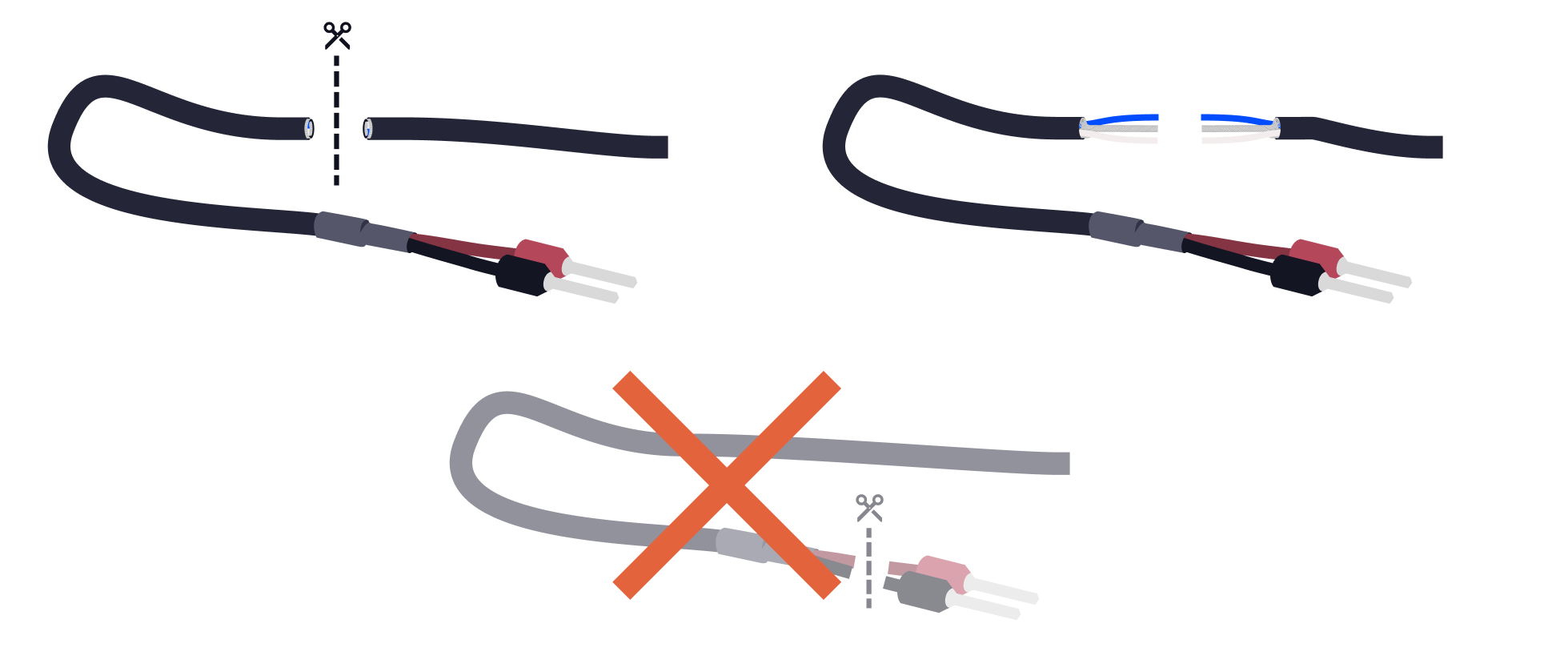How to splice the current sensors
Estimated time to read: 2 min

For the splicing of Perific's current sensors to work properly, you need to ensure that you have a shielded cable with two conductors and shielding.
1. Start by cutting the cable to the current sensor.
Cut the existing cable a couple of decimeters from the pins. We recommend at least three decimeters to ensure the pins remain intact.

Note! Do not attempt to splice the pins directly at the terminal block.
2. Then splice the cable by soldering the desired length together.
It's important to remember that each conductor should be spliced separately, and the shield should also be spliced separately.
We also recommend heat shrink tubing on each conductor. This helps prevent short circuits.

It is possible to make the splice without soldering, for example using terminal blocks or other splicing connectors. However, keep in mind that the conductors are fragile and that strain relief is needed at the connection points.
If you perform the splice without soldering, you therefore need to ensure that the connection is strain-relieved.
3. Place a slightly larger heat shrink tubing that covers the entire splice.

4. Once the soldering is done and heat shrink tubing has been applied to all the conductors, it should work!
It's important to make sure you keep the pins located at the end of the cable.
By following our recommendations, you should still have the pins intact, and you can continue the installation as usual.
Brands and dimensions to use
For the splice to work optimally, we recommend the following dimensions and brands.
Cable
The cable used must be a shielded cable, preferably with two conductors and shielding.
We recommend the cable with article number Elfa 300-69-696.
Heat shrink tubing
The heat shrink tubing can be of any brand but should be suited to the wiring. The small cables are 1.2 mm in diameter (including insulation), and the larger heat shrink tubing should fit wiring that is 3.8 mm in diameter (including insulation).
Published Jun 09, 2023
Updated Jun 18, 2025
Related articles
What is multipoint measurement?
Learn more about Perific's multipoint measurement.
Questions and Answers
Read articleHow to measure solar production with Perific
Follow these steps to install Perific for solar measuring.
Questions and Answers
Read articleWhat do the different status indicators mean?
Explanation to the status indicators on the Perific.
Questions and Answers
Read article